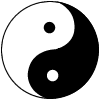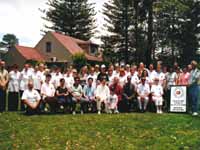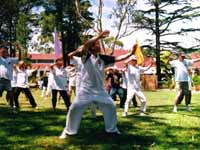Welcome
Welcome to the Australian College of Tai Chi and Qi Gong!
Welcome to Term 4 2025!
There are 2 classes for new student enrolment in Tai Chi Slow Form – one is 9-10 am on Tuesdays and the other is 7-8pm Tuesdays at the Gymea Community Hall. Please register online and payment of $120 per term can be completed on our Australian College of Tai Chi and Qi Gong Inc internet site.
All other classes are continuing from an earlier class enrolment, except our Saturday Practice session at 8am. The past few weeks has had beautiful weather for our practice, I hope that continues! It is an uplifting start to the weekend.Our Annual Christmas Party is being held on Saturday 6th December, in the Gymea Community Hall. Time 7.30 am to 9.30 am.
Given that last year’s outdoor Christmas practice and party was awash with rain, we decided to hold it indoors. It is an interesting time to see some of the advanced forms of Tai Chi practiced for you.
Everyone is very welcome to attend!
Thank you for visiting our website, and the Committee would like to wish you all a safe and happy Holiday season.
Helen Lee
Secretary
New Tai Chi College Logo Tee-shirts!
Many of us practicing Tai Chi have wanted a way to obtain a new Tai Chi College shirt for some years now.
I am happy to announce we can do that now localling in Caringbah. Situated opposite the Caringbah Post Office, the staff at Jett Embroidery can either sew the logo on your own shirt, or you can purchase one there and have it embroidered with our logo, back and front.
Our contact at Jett Embroidery has been Amanda Doyle, tel 9524-6828.
If you bring your own tee-shirt, it can be any colour or style that is comfortable, and suitable for practice.
The cost of the embroidery is $35.00 and if you purchase one of their shirts, that is extra of course.
It is not possible for us to print shirts as we have done in the past, so this is an excellent outcome. Winter jackets can also be embroidered here with our logo as well, at the same price.
I think the new shirts look great! -- Helen Lee, Secretary
Welcome all
Newcomers are encouraged to read through the information below...
All students - thank you for visiting our web site; we hope you find the details you need today.
Courses Taught
Tai Chi (Tai Chi Quan) and Qi Gong (Chi Kung) have a very long history in Chinese tradition and culture. Tai Chi and Qi Gong utilise the body’s Energy System for body, mind and spiritual development.
Tai Chi
Tai Chi exercise is derived from martial arts with a history of over six hundred years. The essence of Tai Chi can be seen in the Ying & Yang symbol which is practiced through the external physical movements and the “floating” internal energy (Chi).
Wu Style Tai Chi is one of the most popular of the traditional forms of Tai Chi. The founder of the Wu Style Tai Chi is the Great Master Wu Jian Quan (1870-1942). This style of Tai Chi can be learned easily by many people, and has been widely accepted as the standard style.
Australian College of Tai Chi and Qi Gong teaches the simplified Wu style Tai Chi, Wu Style Slow and Fast Form, Wu Style Sword and Broadsword (Single & Double), Wu Style Spear and Wu Style Pushing Hands. The techniques are mostly passed down by Grandmaster Ma Yue Liang (1901-1998) and Li Li Qun.
Slow form is considered the starting point or foundation of the entire Wu style set. It function is to improve general health, fitness, muscle strength and flexibility. It also improves the body circulation, regulation of the nervous system, respiration and reduces stress. This form benefits for both the beginners and advance students.
This form is designed for beginner students. The main concept of this form is to learn and control the external balance of the body.
Wu style Fast Form is the parent of the above slow form. This form Requires experience in slow form. It combines the relaxation and control of slow form with dynamic, powerful movements common to many martial arts. This style is sometimes named "application form". This form is used mainly for self-defense, used for beginners and advance students.
Wu style has five straight sword styles. Experience in slow form is required. The sword set can be considered advanced training, for the students that have completed Tai Chi Slow Form. In Tai Chi terminology it seeks to express the spirit of the Phoenix - the Broadsword/Sabre the spirit of the Tiger.
Both single and double Broadsword forms. Stronger than the other Tai Chi forms. Minimum experience required: slow form. Additional experience in Fast Form and/or Sword helpful. This form is only taught to Advance students and Instructors.
24 Form and 13 Form available. Minimum experience required: slow form. Additional experience in Fast Form and/or Sword helpful. This form is only taught to Advance students and Instructors.
There are thirteen basic manipulations or kinetic movements in the tai chi pushing hand: Pung (warding), Lu (diverting), Ji (pressing), An (pushing), Tsai (plucking), Li (twisting), Zhou (elbowing), Kao (leaning) and the five steps, stepping forward, stepping backwards, turning left, turning right, and central balance. Pushing hands technique is used to: Ting (listen), Zou (leading by walking away), Nien (sticking), Hua (neutralising), Fa (attacking). Two people are needed to practice this technique to improve each-others balance and self-defense. This form is taught to students that have finished level 4 Slow Form and Fast Form. This form is also available to the instructors.
Qi Gong
Qi Gong has a history of over 2000 years in China and is the practice of internal movements of the body energy (Chi). Simply, Tai Chi uses physical exercise to circulate energy while Qi Gong teaches you how to adjust the mind, the breath and the body posture to stimulate and circulate Chi.
***There are hundreds of different styles of Qi Gong available and teachers of varying levels of understanding. The Australian College of Tai Chi & Qi Gong would like to stress we teach only pure, medical Qi Gong without emphasis on religion or spirituality. The College's aim is to help others improve health and happiness!***
Qi - Energy/Life Force. "Gong" - To work at or master something. Qi Gong is primarily a health system based on breath, posture and concentration. Level One teaches the basics of Qi Control, Qi Gong history, Energy Ball Method, Less Heavenly Cycle, Great Heavenly Cycle, four breathing techniques and the Qi Gong principle. Excellent for reducing stress, improving health and preventing illness. Teaches the basics of mental training. Benefiting for the beginner Students.
"Step Back Qi Gong". One of the 21 forms of Qi Gong officially recognised by the Chinese Government. This medically-focused Qi Gong was developed by Grandmaster Li Li-Qun (father of College principal Sam Li). It combines gentle steps with concentration and specific breathing techniques. Used extensively in Qi Gong and Cancer clinics in China, it has proven itself a very effective health method. This technique involves the well-known Step Back Qi Gong. Previous experience in Level One Qi Gong is essential.
Advanced Qi Gong techniques: breathing methods, circulation methods, Qi emission and absorption techniques. Qi Gong healing: Qi massage and remote Qi healing for example. Level One & Two Qi Gong is the minimum requirement.
Advanced Qi Gong technique uses the Open Window Method, combining the human and heavenly energy into one, this is a technique is used to communicate the universal energy. Level Four focuses upon spiritual Qi Gong techniques primarily from the Taoist and Buddha school. E.S.P function discussed and various techniques taught. Experience and understanding in Levels 1-3 required.
Australian College of Tai Chi and Qi Gong teaches the Qi Gong techniques that were taught and passed on from Grand Master Li Li Qun.
Please check the course schedule for full details

Health Benefits
The health benefits of Tai Chi practise have been studied for hundreds of years (and in the case of Qi Gong, over 2000 years) in China. In recent years, western science has also begun to discover that these exercises offer more medical benefits than any other exercise system. [more - PDF - article]
How to Participate
Courses generally start at the same time as public school terms start.
Beginners can join late, by arrangement with the instructor. Another option is to observe or follow along with the Saturday morning practice until an appropriate course officially starts.
Join the College and Register for Classes
Courses currently held in these NSW suburbs
- Caringbah
- Gymea
Classes in Victoria
Sea Dragon – Wu Tai Chi Club of Warrnambool Victoria, is an associate club. Having started in 2019, the Club has Five Levels of achievement progressing through the Wu Slow Set, and auxiliary Exercises, Wu Fast Set and auxiliary Exercises, The Slow Sword Form, and the Tai Chi Sabre Form. The instructor is George Leris, trained personally by Master Sam Li and has been authorized to publicly teach the Master Li, Master Ma, Master Wu, lineage.
Saturday Morning Practice
We would like to invite you to our regular Saturday morning practice, which is held 8am to 9am every Saturday at Centenary Park, Miranda.







